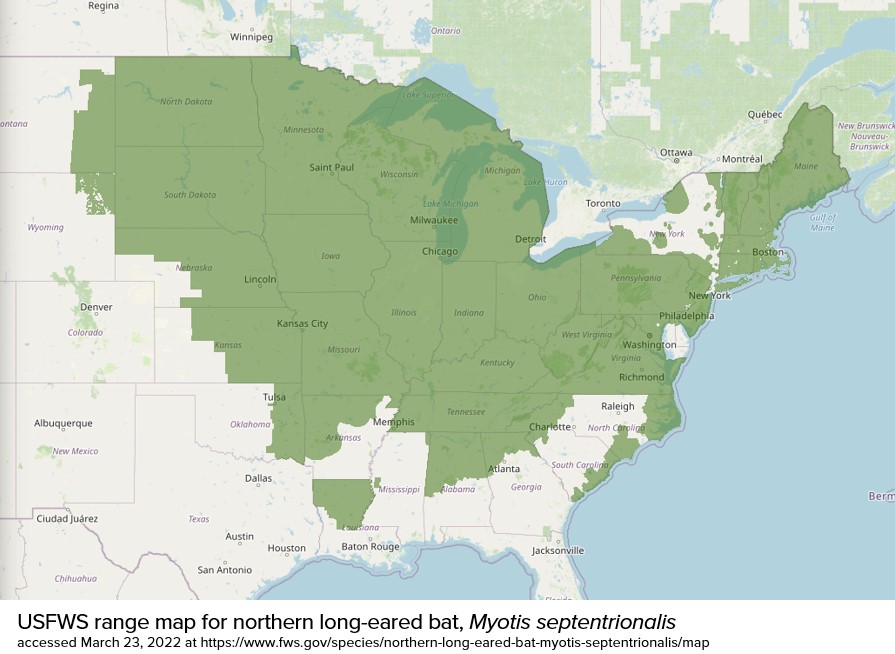The NLEB, more commonly known as the northern long-eared bat (Myotis septentrionalis), is heading for a listing as an endangered species, a process that could be effective by December 2022. As noted in our March 24, 2022 Field Notes article, this change would significantly restrict the activities that can occur in potential NLEB habitat. The U.S. Fish and Wildlife Service (USFWS) published the proposed rule on March 23, and it could be effective starting in December of this year.
While some details will be up in the air until the final rule is published, Wetland Studies and Solutions, Inc. (WSSI) has received guidance from regulators and reviewed the proposed rule in detail. We anticipate changes in the timing and implications for surveys and tree clearing.
If your project is slated to begin tree clearing in 2023, we recommend conducting a bat survey now or scheduling tree clearing to occur outside the Time of Year Restriction, which could extend from April to November starting in 2023 rather than the location-dependent June and July restriction of recent years.
Tree Clearing Time of Year Restrictions
Projects already permitted will need to complete tree clearing ahead of the December 2022 effective date. While some permitted projects may have an extension to April 2023, details will not be available until the final listing is published and guidance is issued by regulatory agencies. We therefore recommend you plan any tree clearing activities accordingly.
NLEB protections currently limit tree clearing activities in certain locations from the months of June and July (see our March 21, 2022 article for this and other protections for several bat species). WSSI has learned that the NLEB Time of Year Restriction (TOYR) will likely be extended to April 1 through November 14, mirroring the protection extended to the federally-endangered Indiana bat (Myotis sodalis).
Survey Considerations
Once the proposed listing goes into effect, WSSI anticipates that acoustic or mist net surveys will be required to document the probable presence/absence (and potentially lift the TOYR) of listed species within the project area that will require a TOYR. The acoustic and mist net survey window is May 15 to August 15. Therefore summer 2022 will be the last chance to conduct a survey until the 2023 survey season. WSSI is certified to conduct acoustic surveys and can recommend consultants who conduct mist net surveys.
Negative acoustic survey results are valid for three years in Virginia, and valid for five years for federal permitting purposes, i.e., no additional studies are needed in those timeframes.
Positive acoustic survey results (i.e., a call from the species has been recorded in your project area) will invoke the Time of Year Restriction for the life of the project.
What Does This Mean for My Project?
WSSI has extensive experience with acoustic surveys and the northern long-eared bat. If you have any questions regarding this proposed listing or the implications for your project, please contact us.

